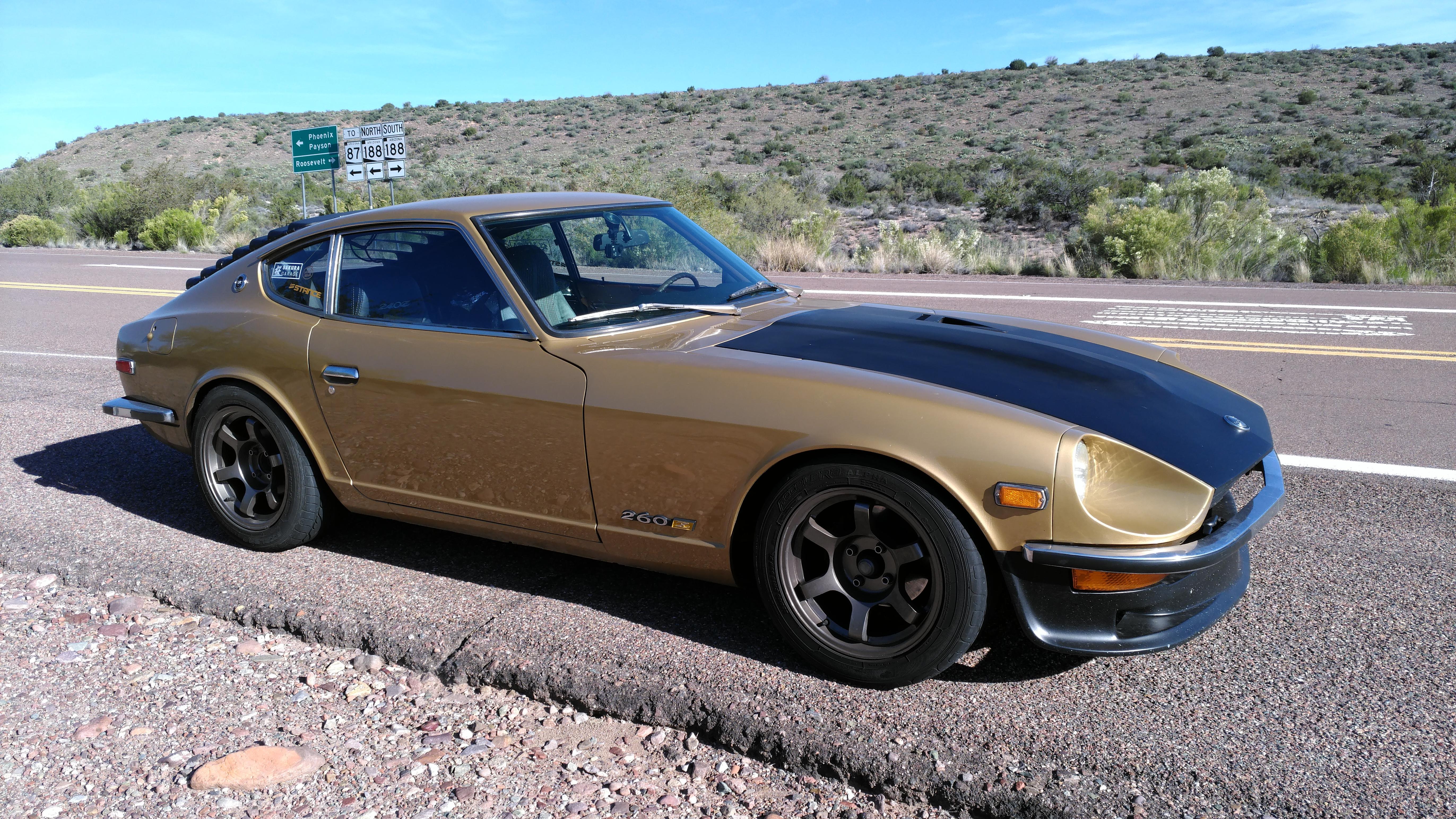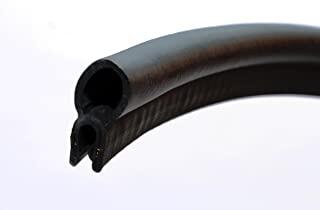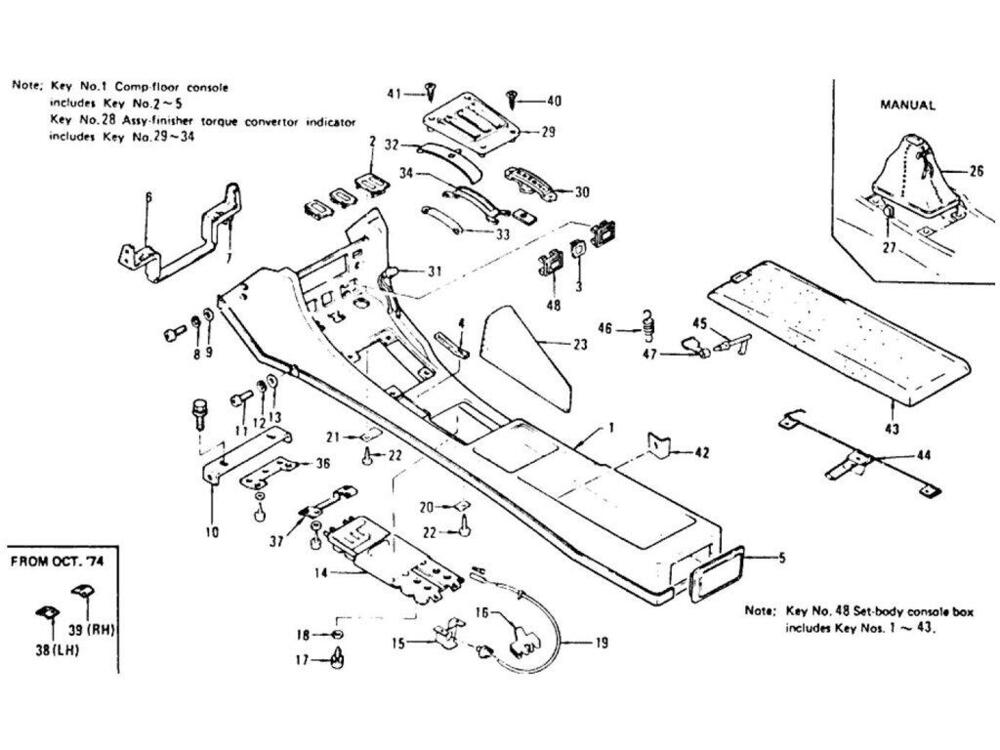
Everything posted by cgsheen1
-
Power antenna operation
There should be a companion 3-pin connector (with the same 3 wire colors - Blue(L), Blue/Red(L/R), and Blue/White(L/W)) under the dash. IIRC they're in one of the two harness bundles that runs from the right front (passenger) corner area to the center and aft along the right side of the transmission tunnel (just under all that HVAC and blower stuff) to the radio and console area. Most of the wiring is for the gadgets in the console - lights, switches and such. HAVING SAID THAT... The wiring to the radios IS THE MOST HACKED electrical wiring in an early Z car! Who knows what the P.O.s have done with that wiring... How the original antenna works (or worked): The stock antenna was manually operated (not auto-extending when the radio was turned on, auto-retracting when the radio was turned off like later antennae). The stock antenna motor is grounded to the frame. It gets power through the switch attached to the radio and accessible through the radio faceplate. The switch isn't part of the radio itself. The switch is momentary (returns to an "off" or "closed" state when released) and controls the direction the antenna motor spins. Pressed to one side, the antenna mast goes up until your release the switch, pressed to the other side the antenna mast comes down until you release the switch. If you keep holding the switch when the mast reaches full extension or full retraction not-good things can happen - there is no shut off in either case except for your finger.
-
1975 to 1978 parts compatibility to interchange ?
If you just look at the dates, you'll see that the early 280Z (1975 - May 1976) has a different part number than the late 280Z (after May 1976 - 1978). How much the "Protector-Front Fend" changed I don't know. But if you check the part numbers, they are the same for the "2 seater" and "2+2" models and for the same date span.
-
Rear hatch weatherstrip
-
Need help with Water Seal Screen
Well, you can cover it up however you want but from the factory it was just a single sheet of fairly thin plastic glued on at the edges by that black goop with round cutouts for the bolt locations... It doesn't really "seal up the door" but it does give the door card - which falls apart when wet - some protection for those of you that live in places where it actually rains and snows.
-
Bracket
- door buzzer swap?
Why not... It's just electricity. If you understand both circuits you can make it work.- 280 floor pans
Oh, okay, there's the reason for the floor / frame rail difference on the passenger side - to create a channel to better protect the hard lines. (The car I have in the shop is completely stripped - just wheels...) The Bad Dog rails fit perfectly over them though - with reliefs in all the right places for the contour of the floor(s).- 280 floor pans
- 280 floor pans
Nope. Just went through this myself. The late (77-78) 280Z passenger side is nowhere near flat, the seat mounts aren't either, neither is the frame rail. The pan that S30Driver shows above looks more correct to me. In my case the 280 I'm working on was only rusted forward of the seat mounts. The replacement I was supplied is the same as the one the OP posted. I cut the front portion off and still had to do a lot of shaping to make it fit the hole. It's a much heavier gauge metal than stock so not a lot of fun. The owner also bought bad dog rails which fit nicely over the stock rails - I just had to do a little fab for the frame rail under the replacement section. If I had that green piece of metal shown above, it would have been much easier... If you need to replace the entire passenger floor, and you use what you have, you'll be fabbing seat mounts and frame rails. The passenger side frame rail isn't flat nor is it symmetrical - one side is longer (well, deeper) than the other. Seat mounts are shaped to fit the non-flat floor as well.- Narrowing down my faulty Cold Idle problem, where to get a replacement ?
Other Nissan engines also used this or a similar AAR. Some with a coolant plate attached to the bottom, some without. Besides the ones listed in the threads posted by C.O. above, the early RB engines also used them. I think there's some very good information in those two threads if you read carefully. Most of us here in Arizona have just eliminated them when they fail - cuz our climate... It's a fairly simple device that, when unpowered, allows a certain amount of air to bypass the throttle plate. It consists of a shuttle that is moved by a bi-metal strip wrapped with resistive wire. At startup the valve gets battery power which heats the wire and thus the bi-metal strip. It is powered as long as the ignition switch is in the ON position. The bi-metal curls with heat and causes the shuttle to slowly close off the bypass air port. It takes a few minutes. Both the intake manifold and the models with coolant plates can keep the heat in the bi-metal - and thus the bypass closed - when the engine is running and for a period of time after shutoff (so a restart while the engine is warm doesn't necessarily have a fully opened bypass). Once it fully cools, the bypass is fully open again when it's in good operating condition.- Radiator Core Support Compatibility
Oh, in that case... I think I would buy the 240Z parts you were looking at - and use a 240Z Koyo radiator. That's what I'm using in my turbo-swapped early 260 (which has a 240Z style core support - they changed that design with the late 260Z->280Z). Great radiator even with A/C running in Phoenix and I daily drive Goldie. That's if you can't find a 280Z front end to remove from another shell. From the pics, you could use a bit more than just the core support.- Radiator Core Support Compatibility
The 280Z has a larger radiator (it's actually deeper) and the radiator core support "dives down" in the bottom center "U" like (it's 1 1/2" - 2" lower than the 240Z core support). If your 280 has A/C the 240Z core support will be missing the punch out(s) for the condenser tubing. It will also not have the correct brackets for the stock air cleaner. Those corrections could all be made of course, but the bottom of the core support would be the largest issue.- 1977 Cylinder #1 Mystery
Correct. Some might think this a "lazy" way to do this but I'm one that always tries to make modifications that can be undone if / when someone wants to return things to stock. Re-using the spray bar and covering the oil supply ports with gasket to block them off is a simple and effective way to convert to internal oiled cam. It also leaves the spray bar in a place where it won't get lost. My mistake was forgetting to explain that to young Curtz at the shop...- Help - Adding ground locations
The bolt threads into a nut that's welded to the frame. It's nearly impossible to keep the threads of the bolt and nut completely isolated (insulated from each other). So, just tightening the attachment bolt through the circle connector will give a very good connection to the frame - no need to scrape any paint off.- Help - Adding ground locations
That is the main Ground (Earth) connection for the entire electrical harness - actually harnesses. There should be a Ground wire from the battery to the firewall that connects the battery Ground to the frame (unibody).- Original Dash beginning to crack-advice?
I would also highly recommend you start using only Meguiar's Hyper Dressing on your vinyl, rubber and plastic parts.- 1977 Cylinder #1 Mystery
Uh no, you're not. You're running an internally oiled cam. The spray bar is there but right now it's just acting as a block-off for the two oil ports that feed it.- Haltech wiring ignition basic questions
Ordinarily if you're adding a ground strap it would be from the block to the firewall - normally from the starter or transmission bolt to a bolt location nearby on the firewall. I've never found that necessary on a Z car but it certainly can't hurt especially if you're unsure if the stock wiring is "still stock". The intake manifold is generally where you ground all your EFI equipment. EFI grounding can be very specific, and you need to avoid ground loops. Most standalones require all signal grounds to a single point (usually on the ECU itself OR prescribed in the documentation to a specific location) and the other ECU grounds all tied to one spot - either directly to the BAT or block (intake manifold IS same as block (and normally the main battery ground goes directly to the block at the starter...)). The engine is a very "noisy" environment - electrically speaking. Some equipment needs to be wired using shielded cable and the shield needs to be grounded only on one if it's ends to eliminate as much noise as possible for the sensors to report properly. This all should have been in the Haltech wiring information. We installed ITB's on the Swiss 240Z and Tony at UMS here in Phoenix installed and tuned an AEM infinity ECU. It made decent power for a mostly stock engine (mild cam) - 180 RWHP.- Which electrical tape do you prefer for wiring harness repair/maintenance?
Wrap the non-adhesive over itself at the start, use a bit of sticky tape at the end and if needed at "tee" offshoots... You'll notice that there are locations on the stock harness where sticky tape is used as markers or to tie off unused (but still present) wires (like the fog lamp wiring up front or the electric fuel pump wiring under the dash and back by the fuel tank)- Painting rear tail light housing (77 280z)
@CO Uh, you mean the 280Z's copied the same plastic taillight surrounds AS THE 260Z... All that great 280Z "innovation" started with the 260Z. 🤪- Rear Bumper Mounting Brackets
The tabs on the mounting bracket can be bent and may give you the clearance you need. The center bumper section should have a slight curve to it but I've seen them come back from the chrome plater straighter than they should be. (and some people like to get those bumpers really tucked in tight...) I align all the parts and panels to get the best visual out of parts and panels that were never perfect to begin with and after all these years are even less so. From your pics I think the bumper is too high on the left corner and needs to come off the body in the back generally, but that's just me. Leave the bracket bolted to the car, bend the "arms" of the brackets in a bit and then square off the tabs to be parallel to the bumper tabs (you may have some "adjustment" on the bumper mounts too). It may take an adjustment or two or three.- Electric fan or new fan clutch/shroud for my 240z?
Ya, I know that area - raised in Idaho Falls, Grandad lived in SLC. I've driven past Layton 200 times... Do they still use Hill AFB? Still, if he has a heat-soak / vapor lock issue, it may or may not have anything to do with his radiator or fan. Hence my question. (Personally, I haven't seen an e-fan setup that moved as much air as the clutch fan in proper working condition. (haven't ever experienced the Taurus fan setup though). I switched to a Koyo 240Z radiator in my Early 260Z and it cools better than anything else I've used - daily driver, stock A/C blasting (cuz raised in Idaho) on a 115 degree day, L28ET with 12PSI and an intercooler, stock 280ZX clutch fan on the ET... Wrapping my exhaust manifold and down pipe made a big difference in the under hood and floor/trans tunnel temperature. But, like you said we have little-to-no humidity on the west side of the Rockies. Maybe couldn't do that with the humidity in Central America, but that's where ceramic comes in. The difference between here and the Wasatch Front is 20+ degrees and it doesn't cool off here when the sun goes down summertime.)- Electric fan or new fan clutch/shroud for my 240z?
A. What's the temperature in Panama? (closer to Phoenix, Arizona temperature or Northern Utah temperature?) B. What's your WATER TEMPERATURE when you're sitting in traffic? (Is your problem with engine cooling OR heat soak in the carbs?)- Heater and AC discussion.
Uh, BS indeed. I have a completely stock A/C system in my 260Z and I converted it to R134a before I put it back on the road 12 years ago. Stock compressor using Ester oil - Phoenix Arizona... Not that I've never recharged it - I have a couple of times when I pulled the engine - but it's not a "every two years cuz I lost refrigerant" type thing. (I'm also a journeyman plumber (former life) and understand flare tubing very well - so I don't have leaks in joints...) My Hitachi compressor has held up so far, but I have a Sanden on the shelf for when it doesn't. With the mods I've made to the duct system and my Kia blower. I'll put my A/C system up against any other S30, any day (especially in Phoenix).- outer quarter glass weatherstrip
On the lates (260Z ->) there's a metal strip involved that screws to the front of the quarter window frame. - door buzzer swap?
Important Information
By using this site, you agree to our Privacy Policy and Guidelines. We have placed cookies on your device to help make this website better. You can adjust your cookie settings, otherwise we'll assume you're okay to continue.








